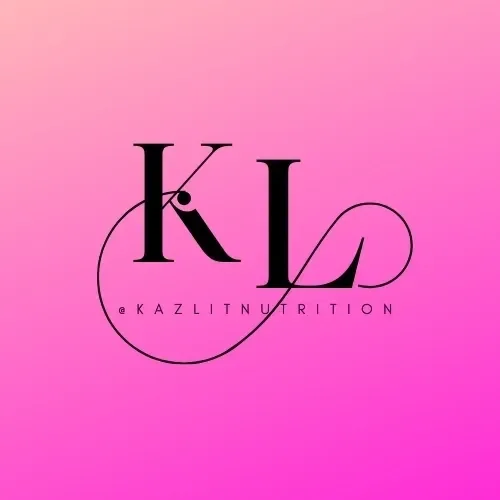My Blog
Why You Crave Sugar in Perimenopause (and What to Do About It)
Why you crave sugar in perimenopause
(and what to do about it)
It’s 3pm. You’re hovering near the pantry… again. Maybe it’s a biscuit, a bit of chocolate or a quick fix from the vending machine. You tell yourself you’ll eat better tomorrow but the craving wins. Sound familiar?
You’re not alone. So many of the women I work with tell me the same thing:
👉 “I’m good all day, but I unravel mid-afternoon.”
And it’s not about willpower. It’s about your biology especially in perimenopause and beyond.
Let’s unpack what’s really going on with sugar cravings in this life stage, why added sugar makes symptoms worse and what you can do to feel more balanced—without banning the foods you love.
What sugar actually is? and what I’m talking about here
When I say “sugar,” I’m not talking about fruit, vegetables or wholegrains. I’m talking about added sugars the stuff found in processed snacks, soft drinks, sweetened yoghurts, cakes, sauces, energy bars and so on.
These added sugars spike your blood glucose quickly, then drop it just as fast leaving you tired, cranky and hunting for your next fix. They also add up fast, without giving your body the fibre, protein or nutrients it really needs.
Why sugar hits differently in perimenopause
During perimenopause and menopause, your hormones particularly oestrogen and progesterone start to shift. These changes don’t just affect your menstrual cycle they also impact your brain chemistry and metabolism.
Sugar cravings in perimenopause are primarily driven by hormonal fluctuations and a drop in serotonin, the “feel-good” neurotransmitter that helps regulate mood and appetite. When serotonin levels dip, your body seeks a quick boost and sugar is one of the fastest (though short-lived) ways to get it.
This creates a cyclical pattern of increased desire for sweet foods, especially in the afternoon or during stressful times. While stress and low mood can play a role, they don’t consistently explain the intensity of cravings it’s the hormonal and neurotransmitter changes that often sit at the root.
What’s the real cost of added sugar during perimenopause?
You don’t need to be afraid of sugar but it helps to understand how too much added sugar can impact:
Hot flushes and night sweats (blood sugar spikes can make these worse)
Sleep (a sugar crash before bed can wake you up at 2am)
Anxiety and irritability (sugar can amplify emotional swings)
Bloating and sluggish digestion
Low energy and afternoon fatigue
It’s not about cutting out everything “sweet” it’s about fueling your body better so it’s not begging for a boost in the first place.
Fuel your body so it doesn’t beg for sugar later
You don’t have to overhaul your life to see results. Just start with one or two of these shifts:
Eat a proper breakfast
Not just coffee! (As much as I love my coffee too ☕).
Breakfast literally means break-fast and it’s your first opportunity to look after your blood sugar and hormones. You don’t have to eat the moment you wake up, but skipping it entirely or only sipping a latte sets you up for a crash.
Try combining:
Protein (eggs, yoghurt, protein oats)
Healthy fats (avocado, seeds)
Fibre-rich carbs (wholegrain toast, fruit)
My favourite, easy breakfast is oats, soy milk, blueberries, then maybe some Blend 11 or protein powder.
🥗 Make lunch count
Many women are good with breakfast but skimp on lunch or skip it altogether. This is the biggest cause of that 3–5pm pantry crawl.
If you’re under-fuelled earlier in the day, your body will come looking for energy later. And that often shows up as a sugar craving.
Build a lunch with:
Protein
Complex carbs (rice, lentils, quinoa)
Veggies
Healthy fats
Think last night's leftovers, roast meat & vegetables with some packet quinoa and avocado.
Carbs are not the enemy, they’re your fuel (I know you hear me say this all the time because it is important)
Perimenopause often brings weight changes, but slashing carbs isn’t the answer.
Carbs are your brain’s preferred energy source and help regulate mood, sleep and recovery.
Let’s not forget carbohydrates include things like:
Root veg (like potato and pumpkin)
Wholegrains (rice, oats)
Legumes and fruit
Not just bread and pasta.
What matters most is quality and timing, not restriction.
Snack with purpose
If you’re genuinely hungry, snack! Just make it count.
Snacks can be nourishing bridges between meals. You don’t have to white-knuckle your way through the day.
Try:
Boiled eggs and crackers
Protein smoothie
Greek yoghurt with berries and seeds
Or even just a piece of fruit
Keep it in the same “fuel” category as your meals don’t just graze on sugar and call it a day.
Final thoughts: sugar is a sign
Sugar cravings aren’t something to feel ashamed of. They’re a signal from your body. Often, it’s saying:
“I need more food, better fuel and more consistent energy.”
The good news? You can support your body and feel more stable, energised and in control. You can enjoy sweetness without the rollercoaster.
💬 Need a little help getting started? Join my 8-week program, Nourish & Thrive.
We’ll walk through this together with simple, doable changes that make a big difference.
Because when you know what your body needs, you stop fighting food and start feeling like yourself again.
Recent Posts

